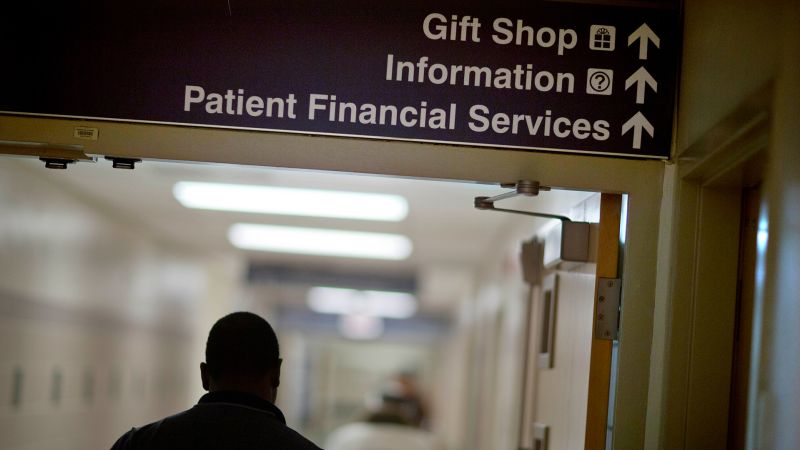CNN
—
Although millions of Americans are expected to be kicked off Medicaid in the coming months, not all of them should be left without insurance.
But it may take some work to regain health coverage.
“For many people, this can be a very disruptive time,” said Sabrina Corlette, co-director of the Center on Health Insurance Reforms at Georgetown University. “There is a significant time and paperwork burden placed on families – many of them very low-income, many of them medically vulnerable.”
States are now free to terminate Medicaid coverage for residents they deem ineligible. States hadn’t been allowed to involuntarily withdraw anyone for the past three years under an early Congressional Covid-19 pandemic relief package, driving up Medicaid and program enrollments children’s health insurance to more than 92 million people.
Of the roughly 15 million people who could lose Medicaid coverage over the next 14 months, about 8.2 million would no longer be eligible, according to a Department of Health and Human Services analysis released in August.
Some 2.7 million of those people would qualify for enhanced federal grants for Affordable Care Act policies that could bring their monthly premiums down to as low as $0.
An additional 5 million people are expected to obtain other coverage, mostly through employers.
Some 6.8 million people, however, will be de-enrolled even if they remain eligible for Medicaid.
See Obamacare policies: People who lose their Medicaid coverage can purchase health insurance plans on the Affordable Care Act exchanges.
Those whose annual incomes remain below 150% of the federal poverty level — $20,385 for a single person and $41,625 for a family of four in 2023 — can get enhanced federal assistance to reduce their premiums to as low as $0 per month. This enhanced subsidy is in place until 2025.
Many people with higher incomes can find subsidized policies for $10 or less.
State Medicaid agencies are responsible for facilitating the transfer of Medicaid residents to Obamacare markets, but the smoothness of the process will vary widely from state to state. Once it is determined that a person is no longer eligible for Medicaid, the agency must assess their eligibility for Affordable Care Act coverage and transfer the resident’s information to the exchange.
Some states that run their own Obamacare exchanges are taking additional steps to ensure their residents remain covered. Rhode Island, for example, automatically enrolls some people in market coverage. It also pays the first two months of premiums for certain residents who actively select policies.
Those who lose Medicaid coverage and live in the 33 states covered by the federal marketplace, healthcare.gov, can apply for Affordable Care Act policies through a special enrollment period that extends through July 2024. State-based exchanges have their own timeframes, with some mirroring the federal exchange and others offering much shorter windows.
Navigators and insurance brokers can help consumers select plans.
Historically, very few people who lose Medicaid coverage end up in Obamacare plans. About 4% of adults who were terminated from Medicaid enrolled in exchange policies in 2018, according to the Medicaid and CHIP Payment and Access Commission.
Coverage also differs. Those who turn to the market may have to find other physicians who are part of their insurers’ networks and may face out-of-pocket costs.
Consider employment-based coverage: A number of people laid off from Medicaid may already be covered by their employers, especially those who started new jobs during the pandemic. Others have the option of getting coverage through work, although it will almost certainly cost more than Medicaid, as it will likely incur premiums, deductibles, and copayments.
Workers may find that they can afford coverage for themselves, but not for their family. If premiums for family policies cost more than 9.12% of household income, spouses and children may be able to get subsidized coverage on Affordable Care Act exchanges.
Employees should contact their human resources department to register. Typically, they will need to enroll within 60 days of losing Medicaid, but those terminated from the program by July 10 will have until early September to enroll.
See if you or your children remain eligible for Medicaid: Millions of Americans who still qualify for Medicaid could lose their coverage for procedural reasons. For example, they may have moved so they do not receive reconsideration notices. Or they may not return the necessary documents to prove their eligibility.
It is therefore crucial that people update their contact information with their state agencies and respond to letters they receive regarding renewing their Medicaid eligibility.
“When you get this package in the mail, respond to it promptly,” Corlette said.
Those who are dropped have 90 days to submit their renewal documents to their state agency, which is required to reinstate them if they are deemed eligible. Beyond this period, people can reapply. In most states, your coverage can be made retroactive for up to three months if you were eligible and received Medicaid-covered services.
Parents who no longer qualify and are terminated should check to see if their children remain eligible. According to the Georgetown Center for Children and Families, as many as 6.7 million children are at risk of losing their Medicaid coverage.
Nearly three-quarters of children expected to be abandoned will remain eligible for Medicaid or CHIP but will lose coverage mainly due to administrative issues. According to the center, black and Latino children and families are more likely to be fired in error.
